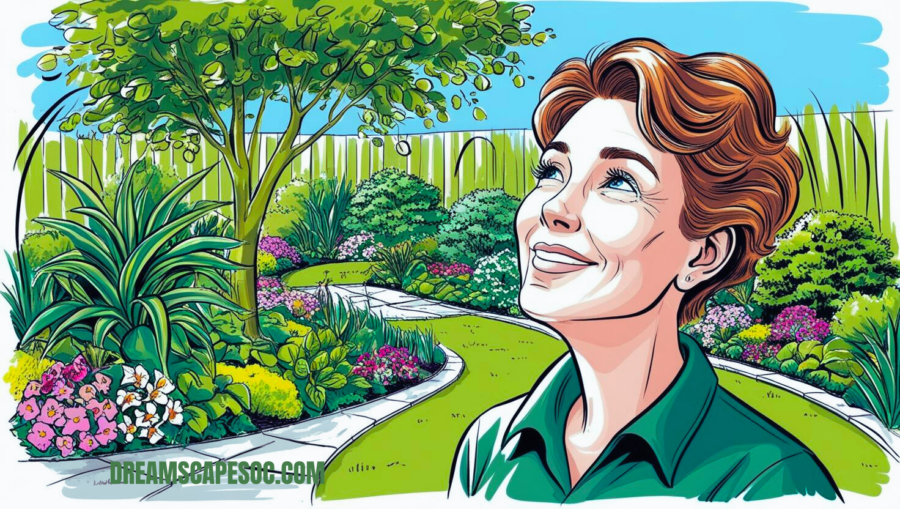Which Plants Are Best for Saving Seeds?
Picking the right plants is key to successful seed saving. While you can technically save seeds from most plants, some are better suited for this process than others. Future crop results might be significantly impacted by the seeds you select.
- Comparing Open-Pollinated and Hybrid Seeds: If you want to preserve seeds, open-pollinated seeds are your best option. These seeds are more dependable since they make offspring that look like the parent plant if they haven’t cross-pollinated with other plants. On the other hand, a number of kinds are carefully combined to create hybrid seeds. They don’t guarantee regular results, so it’s best to stick with open-pollinated seeds if you want reliability in your garden.
- Self-Pollinating Plants: Some plants, like tomatoes, beans, and peppers, are naturally self-pollinating, which means their flowers contain both male and female parts. This makes them great for beginners because they tend to breed true with minimal effort to isolate them from other varieties. Self-pollinating plants are an easy entry point for anyone new to seed saving.
- Considerations for Cross-Pollination: Some plants, like squash, cucumbers, and corn, commonly cross-pollinate with other plants in their family. To guarantee that seeds stay faithful to the parent plant, you need to perform some actions. Two strategies to prevent unintentional cross-pollination are physical barriers and variety separation based on distance. This is extremely important if you are growing multiple varieties of the same species and wish to save seeds that will produce consistent results the next season.
Elevate Your Outdoor Space—Explore Exclusive Landscaping Concepts
When to Harvest Seeds and How to Do It
Success depends on knowing when to harvest seeds. Each plant has specific signs that tell you when seeds are ready, and timing is everything for high-quality seeds with reasonable germination rates.
- Timing is crucial: When the fruit or pod is fully developed, the seeds of the majority of plants are ready to be picked. Tomatoes are chosen when they are completely ripe, but beans are best collected after the pods have dried out on the plant. Early removal of fruit or seed pods might result in poor germination rates. You must observe the plant.
- Signs of Readiness: To determine whether seeds are ready, look for signs like color changes, dryness, and easy separation. Beans and peas should be completely dry and may even rattle in the pod. Tomato seeds, on the other hand, should be taken from fully ripe tomatoes. If seeds seem hard to remove, they need more time to mature.
- Harvesting Techniques: Once the seeds are ready, carefully cut or pull the pods, fruits, or flower heads from the plant. For extra drying, place them on a screen or tray in a shaded, dry area with good airflow. Avoid direct sunlight, which can damage seeds. Proper harvesting is the first step in preserving seeds for a long life.
Transform Your Outdoor Space Today – Download Your Free Landscaping and Gardening Checklist
Preparing and Cleaning Seeds for Storage
Cleaning your seeds is essential to removing any plant material that could attract mold or rot. Different plants require different cleaning methods, so knowing which approach works best for each type is helpful.
- Removing Debris: Once collected, it’s time to clean the seeds by removing any leftover plant material. For dry seeds like beans and sunflowers, a simple rub between your fingers should be enough to remove any extra debris. An extra step is needed for seeds that come from fleshy fruits, like tomatoes, to wash off the pulp.
- Wet vs. Dry Seed Processing: Dry seeds, such as beans and peas, are typically ready once removed from the pod. Wet seeds from fruits, like tomatoes and cucumbers, need more attention. After scooping them out, they’ll need a rinse to remove any pulp to keep them from rotting in storage.
- Seed Fermentation for Certain Plants: Some seeds, like those from tomatoes, benefit from a fermentation step. This extra process helps remove any residue and can improve germination rates. Place the seeds and pulp in a small jar of water and stir daily for about 1-3 days. When a thin layer of mold forms, rinse the seeds well and spread them to dry on a paper towel or screen.

Proper Storage Techniques
Storing seeds properly keeps them viable and ready for next season. The goal is to keep them dry, cool, and safe from light, all of which extend their life and improve their chances of germinating when you plant them.
- The optimal storage conditions for seeds are dry, dark, and cool. In a cold basement, picture a refrigerator or a special storage box. Try to keep the temperature at about 40°F (4°C). Moisture can cause seeds to mold or even sprout too soon, so it’s critically important to keep them dry and sealed.
- Containers and Labeling: Use airtight containers, such as glass jars or plastic tubs with a good seal. Make sure to label each container with the plant name, its variety, and the date you collected the seeds. Even simple envelopes or paper bags work if you place them in an airtight container. Proper labeling makes it easy to track your seeds and know when to plant them.
- Longevity of Stored Seeds: Different seeds have different lifespans, and proper storage can significantly extend these. Generally, seeds like corn and onions last about 1-2 years, while beans, carrots, and peppers can last up to 5 years. Tomatoes and cucumbers may last even longer if stored correctly. When planning your garden, please keep track of each seed type’s expected shelf life so you know when it’s time to replace them.
Before planting, test the viability of the seeds.
Testing seeds for viability is a wise step to avoid planting duds. By checking seeds for germination, you ensure they can still grow into healthy plants.
- Germination Testing: A germination test is straightforward and gives you an idea of your seeds’ viability. Start by placing a few seeds on a damp paper towel, folding it over, and placing it in a plastic bag to hold moisture. Please keep it in a warm spot and check after a few days. The number of seeds that sprout tells you how viable they are.
- Calculating Viability Rates: Once you’ve done a germination test, you’ll know how many seeds are likely to sprout. For example, if you tested 10 seeds and eight sprouts, your viability rate is 80%. Knowing this can help you adjust your planting density, so if the rate is low, you can plant more seeds to ensure you get the desired number of plants.
| Technique | Description |
| Choose Open-Pollinated | Use heirloom seeds for predictable results; hybrids may vary. |
| Start with Self-Pollinators | Easy options: tomatoes, beans, and peppers need minimal isolation. |
| Prevent Cross-Pollination | Separate or barrier plants like squash and corn to keep seeds true. |
| Harvest When Mature | Pick seeds when fully ripe or dry on the plant. |
| Clean Seeds | Remove debris; rinse wet seeds (e.g., tomatoes). |
| Ferment When Needed | Ferment tomato/cucumber seeds briefly for better germination. |
| Store in Cool, Dry Place | Use labeled, airtight containers in a cool, dark spot. |
| Test Viability | Sprout a few seeds on a damp towel to check if they’re still good. |
In conclusion, saving seeds is an enjoyable gardening method that can be used to produce a strong, self-sustaining garden. From choosing the right plants and harvesting them at the right time to properly cleaning, storing, and testing seeds, you will have all you need to benefit from seed saving. This approach allows you to cultivate affordable, locally appropriate crops. If you follow these guidelines, growing strong, healthy plants each season will be a breeze.
FAQs
How can I prevent cross-pollination in my garden?
To prevent cross-pollination, use isolation techniques like separating varieties by distance or using physical barriers, especially for species like squash and corn that often cross.
What types of seeds are easiest for beginners to save?
Self-pollinating plants like tomatoes, beans, and peppers are the easiest for beginners, as they don’t require isolation to produce true-to-type seeds.
Can seeds be saved from hybrid plants?
Yes, but seeds saved from hybrids may not reproduce the same traits as the parent plant, so they’re less reliable if you want consistency.
How long can seeds be stored before they lose viability?
Stored seeds can last anywhere from 1 to 5 years, depending on the type and storage conditions. Seeds like tomatoes can last even longer with proper storage.
Is it necessary to ferment all wet seeds before storage?
Fermentation is mainly beneficial for seeds like tomatoes to remove residue and improve germination. It’s not required for all wet seeds but can help with certain types.

